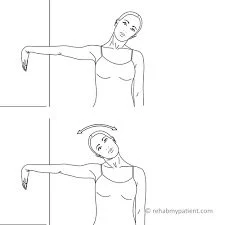The Role of Nerve Flossing, Arm Spirals, and Gentle Lengthening in Hypopressives
Unlocking Nerve Mobility Through Hypopressives
Nerve flossing with arm spirals and active gentle lengthening in Hypopressives is a powerful yet often overlooked tool for improving nerve glide, fascial hydration, and neuromuscular efficiency. When executed correctly, these movements not only mobilise restricted nerves but also help integrate the entire body’s postural, respiratory, and neurological systems for improved function and pelvic floor health.
1. Enhancing Nerve Glide & Reducing Restrictions
The brachial plexus, which runs from the cervical spine through the shoulders and down the arms, needs to move freely within its fascial sheaths. When we incorporate dynamic arm spirals, we gently mobilise this system, preventing adhesions and freeing trapped nerves that might be contributing to pain, tension, or altered movement patterns.
🔹 Why it works:
The rotation and lengthening of the arms encourage the sliding and gliding of nerves.
This prevents adhesions from forming and improves nerve conduction.
Helps release neural tension from scar tissue, past injuries, or postural imbalances.
2. Connecting the Upper and Lower Body for Pelvic Floor Function
Nerve flossing doesn’t just impact the upper body—it links to the pelvis through a continuous fascial and neurological chain. The pudendal nerve, sciatic nerve, and femoral nerve, which are vital for pelvic function, all share fascial connections with the brachial plexus and thoracic spine.
🌀 How Arm Spirals Support Pelvic Floor Function:
Gentle spiralling and lengthening of the arms create a ripple effect through the myofascial system.
This influences pelvic alignment, core integration, and diaphragmatic function.
It ensures that pressure is distributed evenly across the kinetic chain, reducing tension and compensation patterns.
3. Activating the Central Nervous System & Vagus Nerve
The central nervous system (CNS) is constantly processing sensory input, adjusting postural tone, and regulating movement. When we engage in dynamic arm spirals and lengthening in Hypopressives, we are also activating deep neuromuscular pathways, including:
The phrenic nerve, which governs diaphragmatic movement and respiration.
The vagus nerve, responsible for shifting the body into a parasympathetic (rest-and-digest) state, aiding pelvic floor relaxation and optimal function.
The brachial and lumbosacral plexuses, which interconnect the upper and lower body through shared neural networks.
🔹 Why this matters:
Arm spirals stimulate mechanoreceptors, providing the CNS with safe movement feedback.
Activating the vagus nerve reduces overall tension and sympathetic dominance, helping combat chronic tightness in the pelvic floor.
The phrenic nerve’s role in breathing ensures that the diaphragm and pelvic floor work in synchrony, promoting optimal pressure distribution.
4. Hydrating and Mobilising Fascia
Fascia is a continuous web of connective tissue that influences nerve mobility. Scar tissue, prolonged immobility, or poor posture can cause stickiness in this system, leading to restrictions that hinder nerve glide.
💧 How Hypopressives & Arm Spirals Help Fascia:
Active lengthening, combined with breath expansion, encourages hydration and adaptability.
This reduces restrictions and ensures smoother nerve pathways.
Improves interplay between muscles, fascia, and the nervous system, reducing compensatory movement patterns.
5. Balancing Intra-Abdominal Pressure & Core Stability
In Hypopressives, we focus on reducing intra-abdominal pressure while enhancing core engagement. Since the pelvic floor is part of a pressure management system that includes the diaphragm, deep core, and thoracic cavity, arm spirals can help integrate this system effectively.
✨ Key Benefits:
Opens up the thorax, allowing for better rib expansion and diaphragmatic movement.
Ensures pressure is distributed evenly rather than getting trapped in the lower abdomen or pelvic floor.
Improves postural integrity and overall pelvic stability.
Final Thought: A Whole-Body Approach to Nerve Health
Incorporating nerve flossing through dynamic arm spirals and active gentle lengthening in Hypopressives is not just about mobility—it’s about restoring a healthy, adaptive body. By encouraging nerve glide, fascial hydration, and diaphragmatic synergy, we create a whole-body approach to pelvic floor rehabilitation, postural health, and nervous system balance.
🌟 Key Takeaway: Arm spirals don’t just mobilise the arms—they influence the nervous system, the diaphragm, the pelvic floor, and the entire myofascial network. They are an essential part of a holistic strategy for restoring mobility, reducing tension, and improving pelvic function.
🌀 Are you using arm spirals in your practice? If not, it’s time to start!
Check out my on demand short beginners course over in the resources section and then drop into classes or catch up on replays in the video vault - the choice is yours…. x

